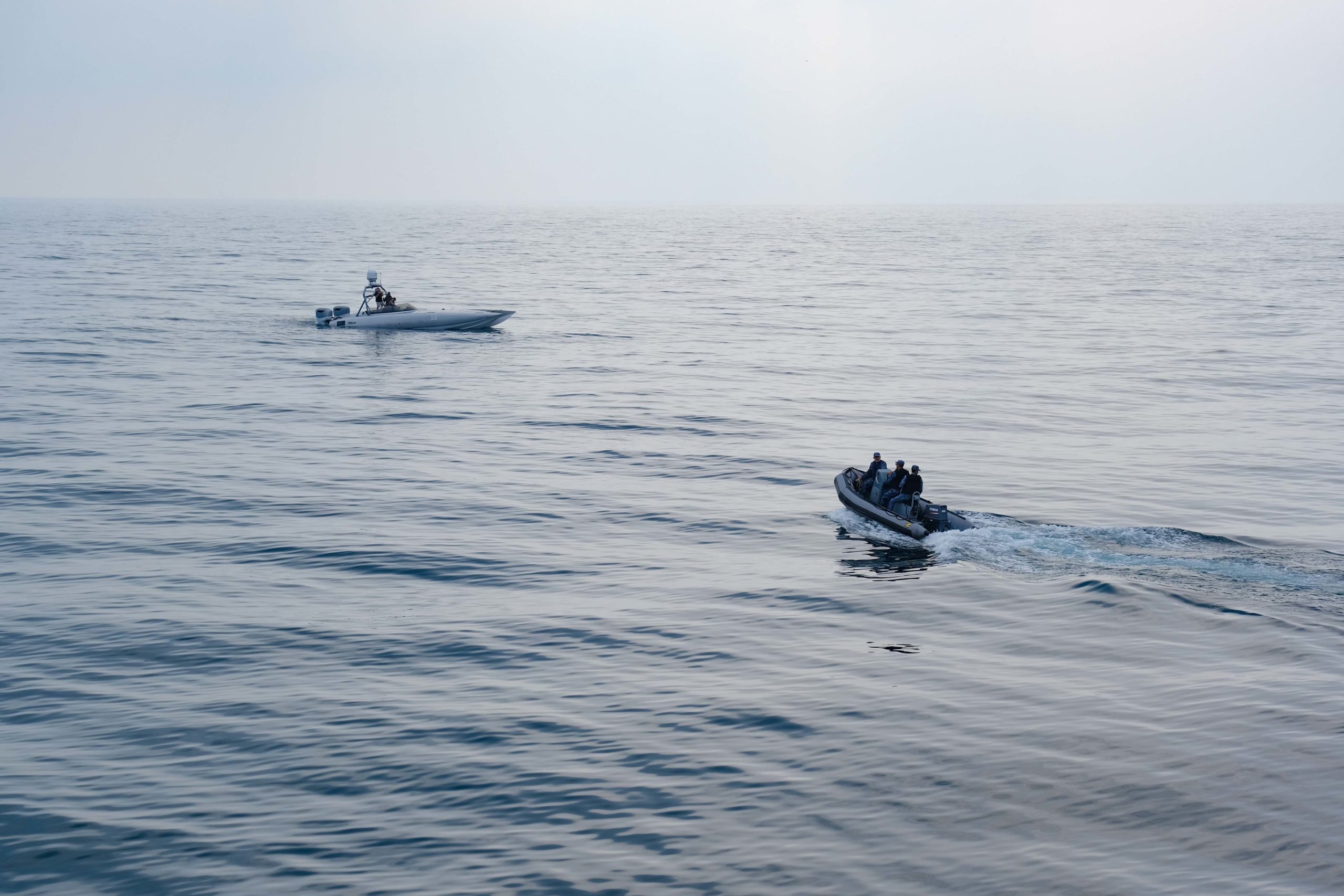By Robbin Laird
I had a chance to talk with Chris Morton during the 2025 Navy League meetings held the first week of April 2025. Morton is the Aerospace and Defence Global Industry Director at IFS which is an enterprise software company.
We discussed the arrival of maritime autonomous systems and their impact on capital ship navies.
Morton noted that Western navies needed to deal with asymmetric threats posed by forces like the Houthis as well as higher-end adversaries. He argued that this created a significant challenge not only from a doctrinal but a capability acquisition perspective.
He went on to underscore that navies have to operate in an integrated manner to be able to combine systems for lower end as well as higher end threats. Or put in other terms, how do Navies incorporate autonomous systems within their capital ship fleets?
This is a question not simply of risk analysis but it’s a fleet management challenge as well. What autonomous systems to procure, and how to use them within broader maritime operations?
Morton underscored that the military faces significant cultural challenges to integrate autonomous systems within capital ship navies. It is not just about the technology; it is about having a framework that can understand how to combine assets and platforms in different fleet combinations to achieve the desired combat effect.
We then discussed the challenge which a distributed fleet faces in terms of decision making being pushed down to the operational level to take advantage of new autonomous systems as well.
Morton emphasized: ‘You need to be able to push decisions down to lower levels AND assume risk in a different way than we have in many cases in the last couple decades, because information dominance has allowed us to bring that decision making up to a high level and gives us the illusion of being able to have perfect information to make decisions, when maybe it’s not the case.”
With distributed maritime operations and the availability of maritime autonomous systems which can provide significant ISR capability to the distributed force commander, the decision-making configuration changes significantly away from “mother-may I” centralized decision-making.
Morton then focused on the heart of the work IFS is focused upon with regard to autonomous systems within the fleet.
Morton highlighted their approach as follows:
“What we have to do from a long-term sustainment capability is to start to rationalize the logistics and sustainment of these autonomous systems from the very beginning of the design phase. When you think about a capability and employing it, it needs to be designed with long term sustainment in mind. We’re going to have to still maintain these systems, especially some of the larger ones. Because I don’t think autonomy is necessarily going to be small. I think a lot of this autonomy is going to be quite large in some cases.
“How do I maintain the sustainment of those platforms in integrated ways? Very few capabilities deploy themselves in a monolith. As autonomous systems start to proliferate, you need to really think about how you’re going to sustain all of these different capabilities in the same operational ecosystem.
“As you speed autonomous systems to market, you need to think about the sustainment of them in the context of the entire fleet.”
And IFS is working the enterprise software management solution to this problem or challenge or opportunity, however one might characterize it.
But Morton’s point led to me to raise an even broader consideration with regard to force structure development and operational foci.
What we are now trying to understand is sustainable operations, end to end. What are the projected sustainable costs of a capital ship fleet to carry out a particular mission? What are the projected sustainable costs of a maritime autonomous system mesh fleet carrying out a particular mission? What are the costs of a mixed or hybrid fleet carrying out a particular mission?
Instead of simply doing mission analysis which EXCLUDES sustainment or logistical considerations, there is a need to factor them into planning for force operational design. This then also allows one to open the aperture in understanding what different configurations of autonomous systems clusters or mesh fleets can deliver in terms of the maritime operations.
This is also a way to get beyond the simplistic concepts of manned-unmanned teaming to consider the actual sustainment costs which can be driven down by employing relevant autonomous systems.
This is certainly part of the shift in maritime operations which is underway.
Featured image: ARABIAN GULF (Jan. 24, 2023) Members of Combined Task Force (CTF) 152 from Combined Maritime Forces operate a small boat near a MARTAC T-38 Devil Ray unmanned surface vessel in the Arabian Gulf, Jan. 24. CTF 152 operates inside the Arabian Gulf to ensure maritime security and promote regional maritime cooperation. (Courtesy photo)


